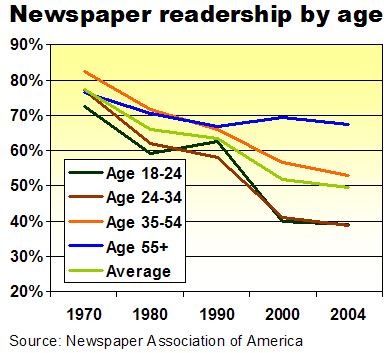What Big Brother watched at PBS
This shockingly inappropriate intrusion on the independence of the press by a secretly retained government hireling was reported bravely, and ironically, on the eve of the Independence Day weekend by National Public Radio. NPR and the Public Broadcasting System, the TV network, have been major targets of the Bush administration’s full-court press on the press.
Public broadcasting is particularly vulnerable to political pressure, because 15.5% of its funding comes directly from CPB and another 4% comes from other federal sources. The biggest chunk of funding, 26%, comes, as they say, from viewers and listeners like you.
As previously reported, Republicans in Congress threatened to decimate federal funding for public broadcasting at the same time Kenneth Tomlinson, the chairman of CPB, powered through the appointment of Patricia S. Harrison, the former co-chair of the Republican National Committee, as chief executive of the previously apolitical organization that dispenses nearly $400 million a year to public broadcasting.
In Chairman Tomlinson’s quest to purge "liberal" bias from public broadcasting, it turns out, he surreptitiously paid $14,000 in federal funds to a little-known consultant named Frederick W. Mann to rate the perceived political tilt of two PBS and two NPR broadcasts. Big Brother, as it were, hired a Little Brother to do his dirty work.
Although CPB declined to release a copy of Little Brother Mann’s findings, because the inspector general of the corporation is investigating the case at the request of congressmen irked at the impropriety of it all, NPR got hold of the reports and courageously put them on the air and on the web.
Little Brother’s analysis would be hilarious, if it were not such a frightening and abject breech of the firewall between government and the press established by the Founding Fathers, whose initial handiwork will be celebrated this weekend.
In one example, Republican Sen. Chuck Hagel of Nebraska was branded a "liberal," even though he last year earned 100% ratings from such conservative organizations as the Christian Coalition and the Eagle Forum. His generic concerns over the war in Iraq landed him on Little Brother’s anti-administration list when he told Tavis Smiley on NPR in June, 2004:
I think we are still on the edge in Iraq. It will depend on whether are able to bring the United Nations, our allies, other Arab countries into this soon enough, and if we are able to define this in a way that the Iraqi people will trust our leadership, have confidence in our leadership, trust our purpose. If we do that, we'll win. If we don't, we will not win.Little Brother catalogued guests on the monitored programs according to his impression of whether they were liberal or conservative – and whether they were friends or foes of the White House. "On all the shows, including that of the conservative Tucker Carlson, Little Brother found more liberal guests than conservatives," reported NPR. "And he found far more critics of Bush than supporters."
By all accounts, the PBS program "Now with Bill Moyers" struck a particular hot button for Big Brother. Analyzing 136 segments of the show, Little Brother found that 92 opposed the Bush administration; that 67 out of 90 guests were "liberal or Democrats," and that even "most conservatives were seen to be opposed to Bush policies," according to NPR.
"They hired right-wingers to do it – you know, go looking for bias with bias," said Mr. Moyers in an interview on the Jon Stewart show quoted by NPR.
"I hope we never have a situation where journalists perceive intimidation in all this," Big Brother told NPR in an interview earlier this month.
Oh, really? Oh, Brother!



